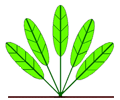Introduction
Andrew South helped me come up with some information about managing Darwin Tap water for Aquaponics. The info will help with other water supplies. Aquaponics is the use of a fish culture pond where the resulting nutrient waste from the fish is used as an hydroponics solution to grow vegetables or ornamental plants. It is said to be the most efficient use of water to produce 100 kg of food.
Darwin has soft tap water with chlorine disinfectant. It is good quality but soft. Its use in fish ponds and aquaria requires the addition of some compounds to increase hardness and carbonate hardness.
Converting tap water to culture water
Water quality measurement can be divided into two parts. Raw water or make-up water before the influence of your fish and plants, the parts that you measure are temperature, pH, KH and GH (salinity if you have a bore near the beach or Alice Springs). You can measure this just out of the tap then after putting an air stone in a sample for 30 minutes to degas CO2 which will change pH. This is important in harder water used in recirculating systems (your aquaponics is a recirculating system).
If using town water supply it is important not to add more than about 20% to an established system otherwise water authority additions such as chlorine may kill the plants and fish in the system.
The Power and Water Authority will have water quality information for the local supply. It is also important to know what type of chlorine treatment is carried out on the water supply.
There are sections in the Government web site where a registered bore has its original specifications recorded, depth and water quality.
A 2004 report on NT Water Supply.
System Water
After water is influenced by life forms it takes on ammonia, ammonium, nitrite and nitrate, phosphate, potassium and other plant nutrients as well as a higher bacteria load. Most are innocuous or have little effect on plant growth unless they are in over supply or short supply such as some of the micronutrients especially iron.
The nitrogen cycle is the most important part of this system and has measuring kits available to monitor levels. Bacteria in the grow beds convert fish ammoina/ammonium to nitrite and nitrate. The level is managed by balancing the amount of fish with the plant growth. It can be thought of as a nutrient bank where deposits (fish food and supplements such as potassium and micronutrients) equal withdrawals such as harvesting plant material so there is always plenty of growth to take up nutrients produced by the fish waste.
These are Ammonium, nitrite and nitrate tests. pH tests will indicate lower if nitrate is being converted to nitric acid a byproduct of nitrification. The most dangerous nutrient is high pH is ammonia. It is part of total ammonium and the percentage of ammonia (NH3) depends on pH and temperature. There is a calculator table here – http://www.cnykoi.com/calculators/calcnh3c.asp
A high pH can be very dangerous to fish because it increases the toxic part of the Ammonium/ammonia relationship. A high pH causes more of the total to be in the more toxic ammonia form, lower pH makes more ammonium which is less toxic. Take measurements and make adjustments if necessary.
Carbonate hardness (KH, Alaklinity)
Measures the bicarbonate and carbonate dissolved in water. (Not to be confused with total alkalinity, this is a different measurement)
Measured with a test kit (I like Aquasonics products, inexpensive and reliable). The desirable level is over 50 ppm or three German degrees if you have a German Aquarium test kit. It is probably the most important water quality measurement because it is the way we fix pH problems. The Alkalinity level will gradually reduce over time as the plants will take up the carbon and KH will need readjusting upwards.
Make adjustment by adding 20 grams of potassium bicarbonate or sodium bicarbonate per ton (1000 litres) to increase the measurement by 10ppm or half a German Degree.
General hardness (GH or hardness or total hardness)
Is a measurement of the carbonates of calcium and magnesium dissolved in the water. It adds these two important plant minerals and increases ionic strength which keeps fish more comfortable and helps with their osmoregulation (look up osmoregulation and fish stress). It is best kept over 50 ppm and can be higher without much problem. Hardness will drop over time because plants will take up calcium and magnesium and GH will need readjusting upwards.
Add 10 grams of Magnesium sulphate and 10 grams of calcium carbonate per ton of water to raise the GH reading 10 ppm. Mix these two separately and dose them. This will give you a calcium to magnesium ratio of about 4 to 1. Aquagreen mixes 7 parts Magnesium sulphate, 10 parts Potassium sulphate and 6 parts Calcium chloride and called it GH Booster, it is added at 20 grams to the ton of water which will raise general hardness by 7.2 ppm.
The best thing you can do is learn the plant nutrient deficiency signs and learn about your fish and what water quality suits them. Smell the plant substrate and water occasionally, both should have a nice earthy smell.
The fish will provide most of the nutrients, however there may sometimes be an advantage adding potassium and micronutrients to supplement fish poo. Aquagreen manufactures a fertiliser that is designed for plants that are kept with fish.
http://www.aquagreen.com.au/plant_data/Dinosaur_Pee.html
Dose between 50 and 100 ml of Dinosaur Pee per ton per week depending on any plant nutrient deficiency signs.
________________________________________________________________________
Barramundi are available from: Aquagreen – http://www.aquagreen.com.au/plant_data/Lates_calcarifer.html
Tropical Veggies from weekend markets and other Aquaponics enthusiasts.


